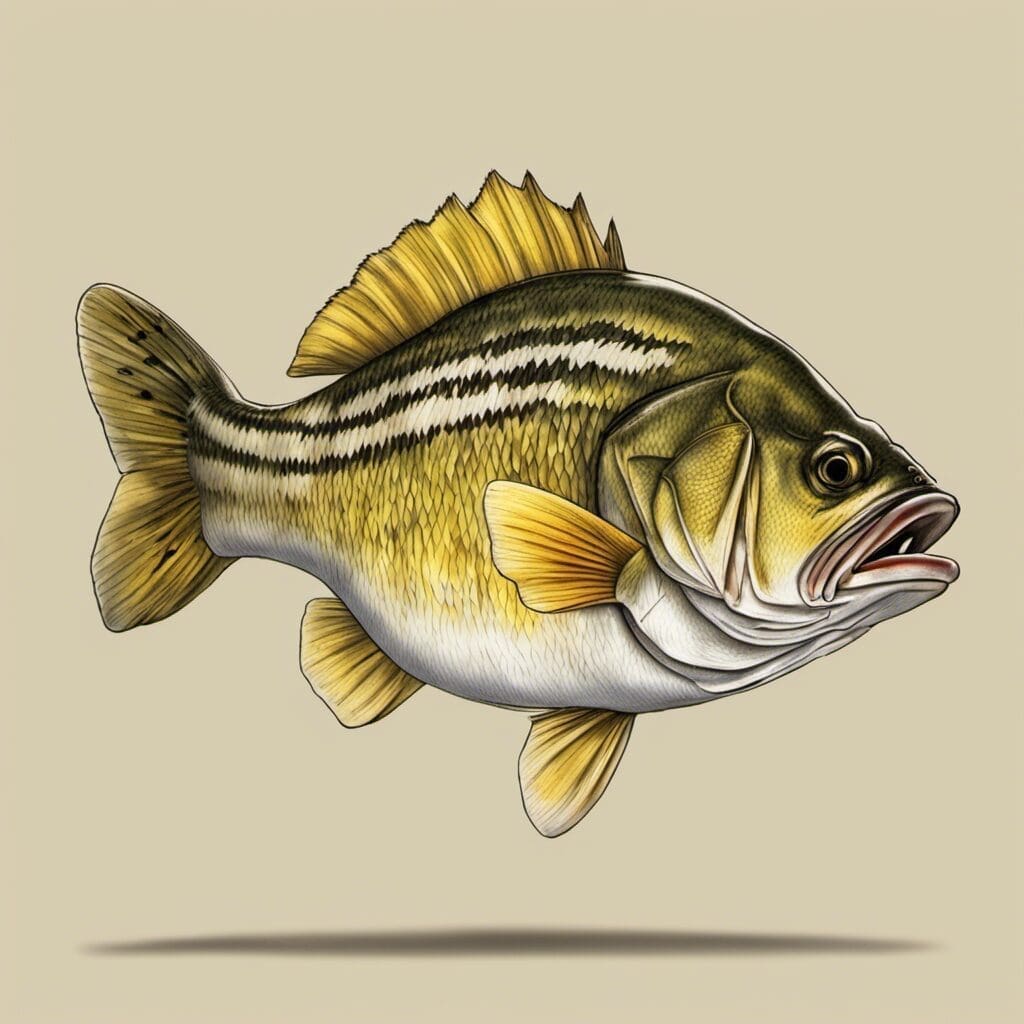Introduction
The Yellow Bass (Morone mississippiensis) is a species of freshwater fish belonging to the family Moronidae.
Conservation Status
Yellow Bass is not currently listed as a threatened or endangered species. Despite this, efforts are ongoing to humanely manage the yellow bass population in several fishing bodies to balance recreational fishing and ecosystem health.
Statistics
| Average | Range | |
|---|---|---|
| Length | 9.8 inches | 6 - 13.7 inches |
| Weight | 1.1 lbs | 0.5 - 2.2 lbs |
| Lifespan | 6 years | 4 – 7 years |
Distribution
Yellow Bass can be found in the United States, predominantly in the Mississippi River Basin. They are most common in the central and southern states. These fish do not have regular migration patterns but can move to different parts of lakes and rivers based on seasonal changes.
Habitats
- Water type: Freshwater
- Depth range: Surface to deep waters
- Temperature range: Subtropical
When and Where to See
Yellow Bass can typically be seen throughout the year with peak abundance during the spring and early summer. The optimal time of day to spot these fish is in the early morning and late afternoon.
Best Fishing Locations
Some of the top places to catch Yellow Bass are:
- Mississippi River, Missouri
- Mississippi River, Illinois
- Mississippi River, Iowa
- Cumberland River, Kentucky
- Tennessee River, Tennessee
- Chickamauga Lake, Tennessee
- Kerr Reservoir, Virginia
- Clear Lake, Iowa
- Big Creek Lake, Iowa
- Gull Lake, Minnesota
To find the species in unknown locations, look for rivers or lakes with abundant aquatic vegetation and rocky or sandy bottoms.
How to Catch
Yellow Bass are attracted to live bait like worms and small fish, and artificial lures can also be effective. They respond well to techniques such as bait casting, trolling, and fly fishing. The best time to catch Yellow Bass is during their spawning season in the spring and early summer.
Identification Guide
Yellow Bass have a silvery body with dark grey-green colour on their back, ghostly white belly, and distinct horizontal stripes. They are often confused with White Bass, but can be identified by their shorter body and the broken, not straight stripe pattern.
Culinary
Yellow Bass has a sweet, nutty flavour and firm texture. It is lean and low in fat, making it a nutritious choice. It can be baked, grilled, or served in a variety of dishes. Always remember to remove any bones before consumption!
Additional Information
Yellow Bass are ambush predators feeding mostly on small fish like shad and minnows. They are preyed upon by other larger predatory fish and waterside predators like herons and eagles. Yellow Bass have a complex mating ritual involving courtship displays and intricate dances.
References and Further Reading
For detailed information on Yellow Bass, consider reading “Fishes of the Central United States” by Joseph Tomelleri and Mark Eberle. Also, check out the FishBase page for Yellow Bass for more statistical information.

